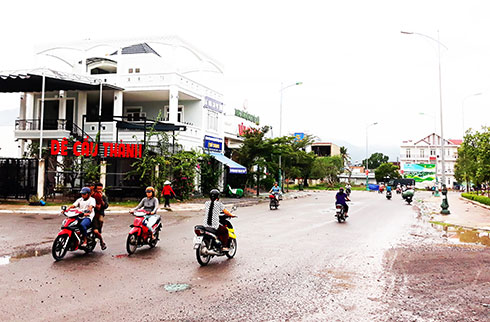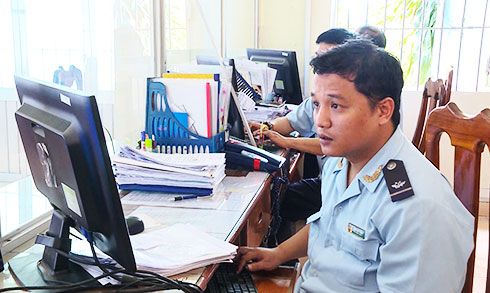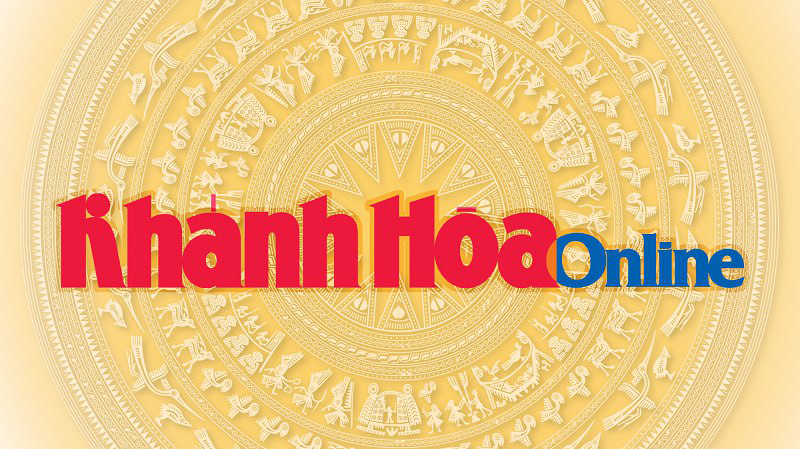
Dien Khanh District, Khanh Hoa Province is focusing in the planning and development of projects on urban infrastructures, striving to be recognized as a town by 2020...
Dien Khanh District, Khanh Hoa Province is focusing in the planning and development of projects on urban infrastructures, striving to be recognized as a town by 2020.
Initial achievement
Under the urban development program in Dien Khanh District until 2020 and vision till 2030, over the last years, many projects on infrastructures financed by medium-term fund 2016-2020 and supplementary capital for 2016-2020 (totaling more than VND86 billion) in Dien Khanh District have been completed. Strategic projects in the fields of health, education, transport, disaster prevention include building an embankment on the northern bank of Cai River, Dien Khanh Townlet; upgrading Khanh Hoa Hospital of Tropical Diseases and Khanh Hoa Psychiatrics Hospital; providing support for waste treatment at Dien Khanh General Hospital, rebuilding secondary schools, primary schools, kindergartens, etc.

|
Currently, the district has developed many key projects (total capital of VND1,139 billion), which play an important role in connecting areas such as the embankment of the northern bank of the Cai River, 2nd phase; the embankment and the route of the Cai and Suoi Dau rivers; D6 road connecting Provincial Road 2 with National Road 27C, Dien Thanh - Dien Toan inter-commune road, infrastructures of Dien An residential area, 45ha and so on. In addition, many new urban areas are being developed such as Southern Cai River Bridge, administration urban area along Cau Lung – Khanh Le Road, Phu An Nam 2 Residence and Resettlement Area.
According to authorities, Dien Khanh District urban development program till 2020 and vision till 2030 has been implemented, especially in terms of residential areas, urban areas, projects on embankment, roads, street lighting. Besides, the district is developing a project to classify Dien Khanh as an urban area, class IV, considered as premise to be upgraded into a town.
Continued effort to meet criteria for an urban area, class 4
Despite the achievements, Dien Khanh Urban Development Program has encountered many difficulties. Some important projects have not been implemented due to some reasons such as dependence on the provincial urban development program, lack of funding; investors’ neglect of calling for community participation in the fields of health, education, physical training and sports. The criteria of urban population density and urban infrastructures are still low, affecting the upgrading of urban management.
Phan Van Tung, Head of Dien Khanh District Urban Management Office says more work needs to be done before the district can be recognized as a town. Firstly, the development planning, programs and projects need to be completed together with the focus on the development of urban infrastructure and residential areas. The district is making zoning and detailed planning (scale 1/500) of areas with rapid urbanization in northern Dien Khanh townlet, 80ha; central Suoi Hiep Commune, 60ha; along the Cai and Dong Den rivers, more than 2.3 km in length; functional zone planning, scale 1/ 2,000, in southern National Road 27C and southern Suoi Hiep Commune, 230ha, etc.
Reportedly, the project on urban area, class IV, is being completed with data and consulting units. The district is also making regulations on urban architecture management. In the time to come, the district will focus on infrastructure projects on anti-landslide embankment, river branch embankments, Dien Lac D6 road, Cho river bridge; urban areas, namely Southern Cai River, Dien An 2, Phu An Nam 2, Dien An Residential & Resettlement area, Bau Gao resettlement area, Provincial Road 2 Dien Phuoc, etc. The district has focused on solutions concerning policies, planning, human resources, investment promotion; housing and urban population development; compensation, clearance, resettlement, mobilization of contribution to infrastructure development and state management efficiency.
In particular, the solutions on human resources include creating favorable conditions for attracting skilled laborers, developing a network of vocational training schools, colleges and universities in the district. solutions to promote investment include applying incentive policies in such areas as urban development, technical infrastructures, social housing, agriculture and rural development. Besides, it is required to propose policies to attract investment from private sectors, large companies, and promotion programs at national and provincial levels; recommend provincial funding allocation for big projects regarded as premises for urban development.
P.Lam
Translated by N.T










